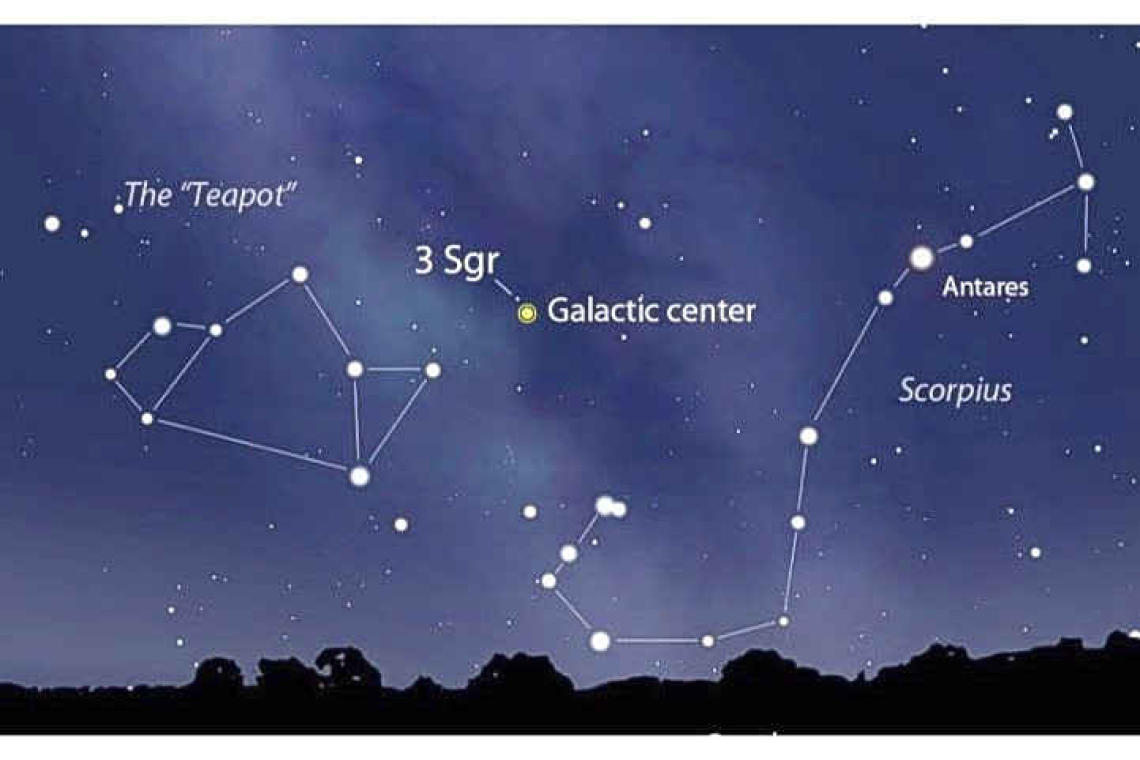~ St. Maarten’s Backyard Astronomy for July 5-7 ~
Sun rises at 5:42am
Sun sets at 6:52pm
Lunar phase: 1st quarter, new moon
Moon rises at 6:07 am
Moon sets at 7:49 pm
This weekend, the delicate crescent moon will hover above the western horizon in the evening twilight. The planet Mercury will be nearby. A good time to look for Mercury is about 40 minutes after sunset. Also, nearby is the bright star Regulus, the brightest star in Leo the Lion.
While you admire the moon, Regulus and Mercury, maybe take a moment to notice a dim glow on the unlit side of the moon. That’s earthshine! It is light from the Earth reflected towards the lunar surface.
Later on, the night belongs to the stars and a few planets, especially if GEBE turns off your neighbourhood lights. Moonless nights are great times to seek out the dimmer stars and even the Milky Way. You can locate the Milky Way by looking south. A good time for this is between 11:00pm and 2:00am. At these hours of the night, the band of stars looms almost vertical from overhead towards the southern horizon. Many people use recognizable constellations to help them find the Milky Way. Sagittarius and Scorpius are good choices for that. Sagittarius is often called the Teapot, and its stars really do look like a teapot shape. Scorpius is found by seeing the curled tail and the three-pronged antennae. Higher overhead is the Summer Triangle, which we learned about last weekend. Cygnus, Aquila and Lyra are all markers for the Milky Way.
But what is the Milky Way? It’s our own home galaxy, a spiralling and swirling collection of at least 100 billion stars. Since we are a part of the galaxy, we can’t observe the spiral pattern directly, but we sure can see part of the swirl, and it is beautiful indeed. We used to think the Milky Way was a near perfect spiral galaxy, but recent observations indicate that it is more likely a barred-spiral, somewhat more rare, but all the more interesting for it.
The very late night star gazers will be treated to Saturn, Mars and Jupiter all in a line, big and bright in the moonless sky. A good time for this is 3:30am as Jupiter will be just rising from the Eastern horizon while Saturn is halfway up in the southern sky, and the red planet, Mars, will be somewhere between them, a bit closer to Jupiter.
Enjoy the starry skies this weekend with someone you love.
Thank you for keeping up with the Night Sky articles, backyard astronomy designed for St. Maarten sky viewing. FYI: If you are out later on in the week, note that each star rises about four minutes earlier each day than written here, and the moon rises 50 minutes later. Night Sky is researched and compiled by Lisa Davis-Burnett. Earthsky.org is a key resource for information and images. Questions or comments? Email This email address is being protected from spambots. You need JavaScript enabled to view it.







